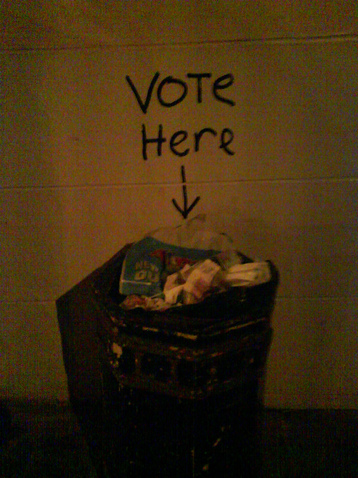
So it’s not surprising to hear people point to irregularities in the general election in an effort to boost their arguments for voter I.D. laws. Some of the claims are ridiculous, but some really do point out bizarre results that require a bit of head-scratching.
Let’s start with the ridiculous. Maine’s Republican Party chairman, Charlie Webster, basically accused Democrats of busing in African-Americans to vote for Obama in rural areas. At least, he acted perplexed that people actually saw humans with black skin casting votes.
“In some parts of Maine, there were dozens of black people who came in and voted on Election Day,” he said. “Everybody has a right to vote, but nobody in town knows anyone who’s black.”
| | Well, a small percentage of Maine is, in fact, black, and Webster later apologized for his remarks. But that one never passed the smell test. If you were going to rig a presidential election, you would look for a more effective way than to send only dozens of conspicuous people into rural Maine to somehow cast ballots they weren’t registered to obtain. Now on to the head-scratchers: In 59 Philadelphia voting districts, Mitt Romney received zero votes, according to the Philadelphia Inquirer. The same happened in nine inner-city Cleveland districts, according to the Cleveland Plain Dealer. Really? It’s easy to believe President Obama would win those districts by an overwhelming majority, but totally and completely unanimous? Even in his rigged elections, Saddam Hussein never got 100 percent. And Mitt Romney, it’s worth noting, only got 78 percent of the Mormon vote. But, frankly, a rigged result like that would be too obvious, which argues against fraud. Finally, Florida once again proved that, if it were an independent nation, it would make Haiti’s elections look good. In St. Lucie County, 247,383 votes were counted. The only problem with that is that the number of registered voters there is 175,554. This blogger called it a massive fraud. Officials, however, explained that the ballot was so long some voters submitted two voting cards. The actual turnout was said to be about 70 percent, which some conservatives think is still suspicious. So what’s going on? Look, no election, especially one involving more than 100 million voters, can be held without some strange problems. I’ve spoke with election clerks that tell of all kinds of odd things, mostly involving equipment problems and mostly in races where the outcome was not otherwise in doubt, so the problems didn’t come to light. I doubt any presidential election in U.S. history has been without these oddities, and there certainly have been instances of real fraud. However, none of the above instances was of a scope large enough to change the outcome of the election. I’m also not sure they would have been changed by the requirement of a photo I.D. That doesn’t mean states shouldn’t require I.D., as long as it makes them readily available to those voters who otherwise don’t have one. Any step toward making elections more secure is a good one. Politics, after all, is a conduit to power, and power can tempt people to do some strange and desperate things. |

 RSS Feed
RSS Feed

